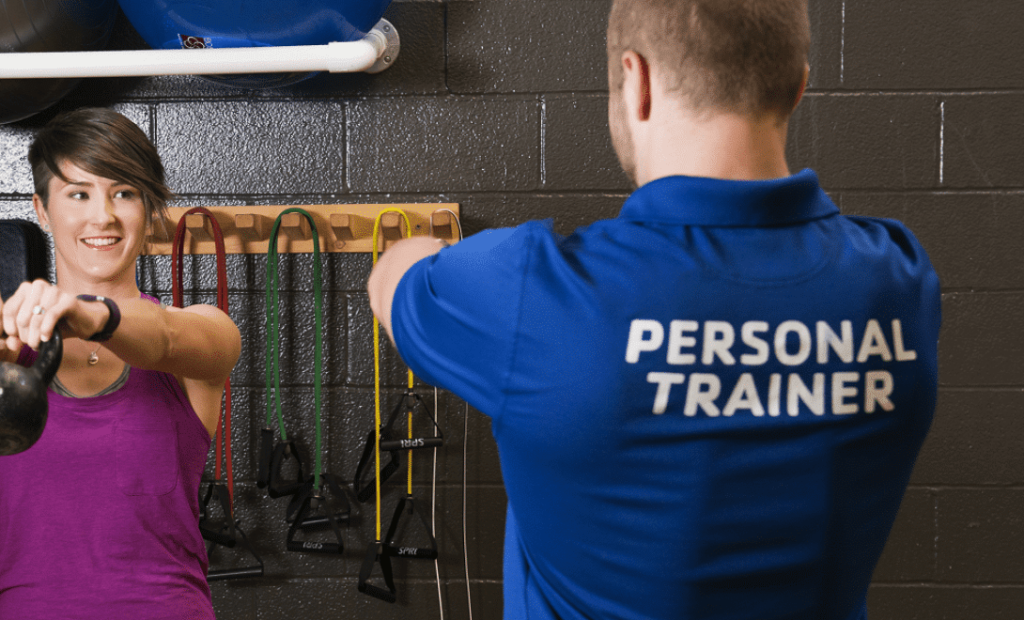Steps to Be a Personal Trainer: Your Roadmap to a Rewarding Fitness Career

Becoming a personal trainer is an exciting and fulfilling career path for those passionate about health, fitness, and helping others achieve their wellness goals. As the fitness industry continues to grow, the demand for qualified and dedicated personal trainers is on the rise. In this article, we’ll outline the key steps to becoming a personal trainer, including the necessary education, certifications, and practical experience needed to succeed in this dynamic field.
Step 1: Assess Your Passion and Suitability
Before embarking on your journey to become a personal trainer, it’s essential to assess your passion for health and fitness and your suitability for the role. Consider the following:
- Passion for Fitness: Do you have a genuine interest in exercise, nutrition, and helping others lead healthier lives?
- Interpersonal Skills: Are you a good communicator, motivator, and listener, capable of building rapport and trust with clients?
- Adaptability: Can you adapt your coaching style and approach to cater to clients’ individual needs, preferences, and limitations?
- Commitment to Continuous Learning: Are you willing to invest time and effort in ongoing education and professional development to stay current with industry trends and best practices?
If you possess these qualities and are committed to making a positive impact on others’ lives through fitness, then a career as a personal trainer may be the perfect fit for you.
Step 2: Obtain the Necessary Education and Certifications
To become a qualified personal trainer, you’ll need to complete a recognized education program and obtain the necessary certifications:
- Certificate III in Fitness: This entry-level qualification, such as the SIS30321 Certificate III in Fitness offered by the College of Health and Fitness (COHAF), provides the foundation for working as a fitness instructor in gyms, fitness centers, and outdoor settings.
- Certificate IV in Fitness: To work as a personal trainer, you’ll need to complete a higher-level qualification like the SIS40221 Certificate IV in Fitness from COHAF, which covers advanced topics such as personalized exercise programming, nutrition advice, and small business management.
- First Aid and CPR Certification: Personal trainers must hold current first aid and CPR certifications to ensure client safety and respond effectively in case of emergencies.
- Specialized Certifications: Depending on your interests and target market, you may choose to pursue additional certifications in areas such as group fitness, strength and conditioning, or nutrition coaching to expand your skill set and marketability.
When selecting an education provider, look for reputable institutions like COHAF that offer nationally accredited, industry-recognized courses delivered by experienced instructors.

Step 3: Gain Practical Experience
Hands-on experience is crucial for developing your skills as a personal trainer and building a successful career. Consider the following opportunities to gain practical experience:
- Internships or Work Placements: Many education providers, including COHAF, incorporate internships or work placements into their courses, allowing you to apply your knowledge in real-world settings under the guidance of experienced professionals.
- Volunteer or Community Work: Offer your services to local community centers, schools, or non-profit organizations to gain experience working with diverse populations and hone your coaching skills.
- Shadowing or Assisting: Reach out to established personal trainers in your area and ask if you can shadow or assist them in their sessions to learn from their expertise and gain valuable insights into the industry.
- Part-Time or Entry-Level Positions: Seek part-time or entry-level positions at gyms, fitness centers, or studios to gain experience working with clients and collaborating with other fitness professionals.
Step 4: Develop Your Business and Marketing Skills
As a personal trainer, you may choose to work independently or within a fitness facility. In either case, developing strong business and marketing skills is essential for attracting clients and growing your career:
- Define Your Niche: Identify your target market and areas of specialization, such as weight loss, sports performance, or senior fitness, to differentiate yourself from competitors and attract clients who align with your expertise.
- Create a Business Plan: Develop a comprehensive business plan that outlines your services, pricing, target market, marketing strategies, and financial projections to guide your decision-making and growth.
- Build Your Brand: Establish a strong personal brand that reflects your unique value proposition, expertise, and personality through a professional website, social media presence, and consistent messaging.
- Network and Collaborate: Attend industry events, join professional associations, and collaborate with other health and wellness professionals to expand your network, gain referrals, and stay informed about industry trends and opportunities.
- Invest in Continuous Learning: Stay current with the latest research, techniques, and best practices in the fitness industry by attending workshops, conferences, and pursuing additional certifications to enhance your knowledge and skills.

Step 5: Prioritize Client Success and Satisfaction
As a personal trainer, your success is directly tied to your clients’ success and satisfaction. To build a thriving career, prioritize the following:
- Personalized Programming: Develop customized exercise and nutrition programs that align with each client’s goals, preferences, and limitations, ensuring safe, effective, and enjoyable workouts.
- Effective Communication: Regularly communicate with your clients to provide feedback, support, and motivation, celebrating their progress and addressing any concerns or challenges.
- Client Retention: Focus on building long-term relationships with your clients by delivering exceptional service, demonstrating genuine care for their well-being, and continuously adapting your approach to meet their evolving needs.
- Professional and Ethical Conduct: Adhere to the highest standards of professionalism and ethics, maintaining client confidentiality, respecting boundaries, and prioritizing client safety and welfare.
Quick steps to be a personal trainer
Becoming a successful personal trainer requires a combination of passion, education, practical experience, business skills, and a commitment to client success. By following the steps outlined in this article and investing in your education through reputable institutions like COHAF, you can turn your love for health and fitness into a rewarding career that positively impacts countless lives.
Remember, the journey to becoming a personal trainer is one of continuous learning and growth. Embrace the challenges, celebrate your clients’ successes, and never stop striving to be the best version of yourself. With dedication, hard work, and a genuine desire to help others, you can build a fulfilling career as a personal trainer and make a lasting difference in the lives of those you serve.
Ready to take your first steps to be a personal trainer?
If you’re contemplating a career as a personal trainer, then feel free to reach out to our team to discuss your options. The College of Health and Fitness has fitness courses that are suitable and we’re happy to discuss your options.
THE TOP TEN BENEFITS OF BECOMING A PERSONAL TRAINER:
- Helping others achieve their fitness goals
- Flexible work schedule
- Career growth opportunities
- Become your own boss
- Continuous learning and development
- Networking opportunities
- Active and healthy lifestyle
- Emotionally rewarding work
- Variety in the work environment
- Potential for specialisation
